Secure access service edge (SASE) allows for streamlined connectivity between applications, networks, and endpoints. By bringing together networking and security solutions, SASE allows a business to operate in a unified cloud environment that moves security towards endpoints instead of data centers. It does this by leveraging current networking solutions and security models, such as SD-WAN, next-generation firewalls (NGFW), secure web gateways (SWG), and zero trust. Rather than replacing these solutions, SASE orchestrates them into a cloud-native environment that protects users and applications regardless of where they are in the world, which better balances the user’s need for a high-quality experience and the IT team’s ability to defend the network and its endpoints.
Advantages of SASE

With a combination of networking and security capabilities, SASE enables employees to work and collaborate from anywhere in the world without compromising network security. Users are provided with a secure connection that requires device authentication and a health check to verify the right people are accessing the sensitive information they need to get work done. While working, their connection can be optimized for speed and stability no matter the application or resource they access. These services also make implementing zero trust policies and security tools easier, so a business’ IT team can authenticate connections, monitor for suspicious activity, and receive streamlined information for better real-time decision making.

SASE Capabilities

SASE security solutions and services have been evolving quickly to meet the needs of workers, network teams, and security specialists, but it aims to unite the best features of SD-WAN technology and cloud security services. This coordination allows for policies to be standardized across the network, telemetry to be shared easily, and streamlined orchestration between security services to provide insightful alerts and notifications. A business looking to move to SASE architecture should expect solutions that allow IT teams to coordinate better and support each other’s goals as the company deploys and further utilizes SASE.
Some of the core capabilities a business should expect to see with SASE include:
- Centralized Management: SD-WAN technology provides portals and dashboards that make it simple for IT staff to configure devices, manage the network, and automate tasks.
- Infrastructure Scaling: Both physical and virtual platforms should minimize downtime for users, provide multigigabit port options, data encryption, and optimized WAN traffic.
- DNS Layer Security: Security solutions that stop harmful DNS requests to prevent connections to malicious resources used to launch attacks.
Threat Intelligence: Leading research and resources surrounding security threats, industry trends, the latest vulnerabilities, and support that allows security services to better respond to emerging threats and new bad actor tactics. - Network Monitoring: SASE architecture allows for data and insights to be gathered from endpoints, applications, cloud resources, and security tools to provide a full picture of network conditions.
Implementing SASE

The two primary processes of adopting SASE are either a unified or disaggregated approach. A unified method involves a single vendor for services and specific platform integrations that allow for a streamlined experience with a business’ vendor of choice. A disaggregated approach can utilize multiple vendors or applications and can be appealing to a company that wants to take a DIY approach. When shifting to secure access service edge solutions, some businesses begin with either networking or security as they deploy new services, but either approach allows for the flexibility needed to best suit an individual company.
How a business approaches deployment depends on the level of support they need and the level of customization they want for their services. SASE can be implemented as a service, co-managed with a managed service provider (MSP), or handled independently by the business’ internal teams. A full-service package can be beneficial for businesses that desire a fully integrated service with a high level of support from their provider. A co-managed implementation allows a business to make use of existing infrastructure, such as an already in-use SD-WAN, while still accessing support for their services. Lastly, an independent approach can work for companies with unique needs and the staff specialized enough to buildout and support SASE infrastructure.

IT Consultants and SASE

SASE can be an appealing architecture for medium and enterprise businesses to shift to because of its high level of flexibility and increased security. Remote work has become common in the modern workforce, and, according to ESG research reports, 45% of requests to access sensitive company data comes from employees working remotely, and 64% of companies believe network security to be more difficult than it was just two years ago. The combination of increased remote work and a raised bar for network security means working with an IT consultant can be a strong decision for companies that want to transition to SASE architecture to better ensure they implement the best security tools for their environment.
An IT consultant can provide insight into strategic best practices for businesses at any stage of adoption. No matter if a business is just in the planning stages or has initiated a full-service deployment, an IT consultant can help the business plan policies and identify the best vendors for solutions. Roughly 60% of large businesses will have some kind of strategy to move towards SASE by 2025, and those plans can be strengthened and supported by an IT consultant experienced in SD-WAN, cloud security, and SASE architecture.

Summary
Secure access service edge (SASE) is an architecture that allows users to have a high-quality network experience while remaining secure no matter where they work. Security is taken to the edge of the network by combining SD-WAN technology, cloud security solutions, and other services needed to connect, authenticate, and monitor endpoints as they move from place to place. Many enterprise-level businesses have begun to move to a SASE model, and they can do so with a full-service package, co-managed implementation, or an independent approach to specialize the infrastructure for their business. No matter how a company arrives at SASE, they can expect a centralized platform that helps connect workers and provides valuable security insights to balance network and security needs.
If your business is planning to move towards SASE, then you need an experienced IT consultant that can provide strategic insights and long-term solutions for your unique needs. Robinett Consulting provides complimentary consultations to businesses looking to take advantage of our years of experience in networking and cybersecurity. Whether your business is just starting to research secure access service edge or need assistance with an already active deployment, our IT specialists can work one-on-one with your IT team today to find the most secure and cost-effective strategy to develop your IT environment!




